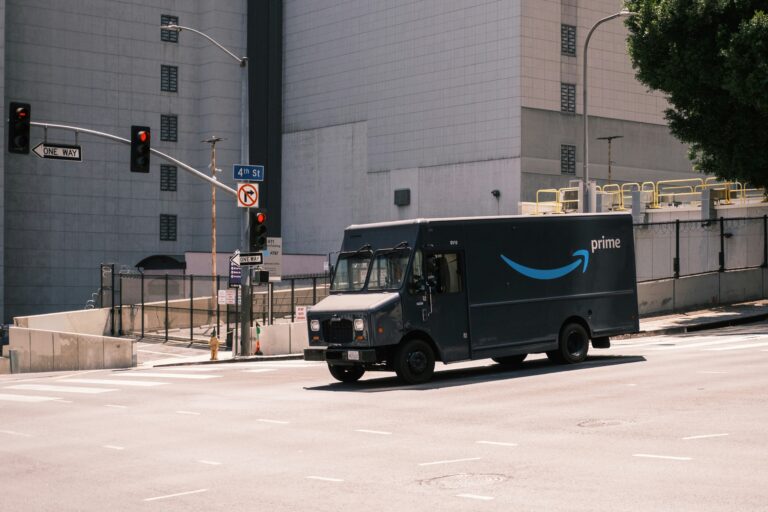Yesterday was May Day, so the labor news abounds.
A New York State Supreme Court Judge (trial court) derailed Lyft’s efforts to block their drivers from New York City’s mandated minimum pay rate. Judge Andrea Masley dismissed the ridehailing company’s lawsuit, filed in January to challenge the City’s method for calculating the new rate – a formula based on “utilization” of drivers. According to Lyft, the new formula would destroy market petition and ultimately harm the drivers; the Taxi Limousine Commission’s imposition of the rule was “arbitrary and capricious.” Judge Masley rejected this argument and underscored that the TLC followed proper administrative procedure, including via notice and comment, to arrive at a rule that had a rational basis. Moreover, Masley found that Lyft’s petition was “factually incorrect.” The New York Taxi Workers Alliance (NYTWA) issued a statement yesterday that reiterates its strength and momentum in fighting against Lyft and Uber, who put “craze for money” before “humanity.”
In Mountain View, CA and at least 11 other offices across the nation, Google employees protested their employer’s recent response to workplace activism. Those participating in yesterday’s sit-in demonstrations allege that Google has been “systemic[ally]” retaliating against workers who have become increasingly vocal in recent months. In the New York office, Meredith Whittaker and Claire Stapleton, two leaders of November’s headline-news walkout, addressed 400 employees, reminding them that Google will never confess to retaliation. (Indeed, Google insists that they do not retaliate, and that they investigate thoroughly all claims that they do.) Stapleton last week told colleagues that she has faced threats of demotion and prods to take (unneeded) medical leave. Meanwhile, also last week, an unidentified individual filed a complaint with the NLRB regarding widespread retaliation, including transfers and demotions. As Bloomberg’s Joshua Eidelson explains, this second wave of unrest at the tech giant signals a culture change, as the traditionally untraditional, eccentric-friendly and permissive firm begins to look just like “the merciless corporations that came before it.”
Tech can fuel the labor movement, according to Libby Watson in Splinter. Watson argues that alt-labor organizations must play a pivotal role in boosting worker power, since traditional unions face an uphill battle in regaining lost prominence. Via apps and social media platforms, dispersed workers can tune in, connect to each other, and galvanize campaigns for workplace reforms. Watson highlights AI technology in WorkIT that has helped train Walmart workers on labor and employment rights, sites like UnionBase that serve as social networking platforms, and Coworker.org, which can help generate and distribute petitions for making demands of management. (Watson does not address ongoing concerns that AI will lead to diminished worker power, lower wages, and “stolen time.”)
Tech can ruin the workplace, according to Jonathan Vanian in Fortune. Vanian describes recent union efforts to push back against workplace technology and bargain for protections against job loss due to automation. Unions are also challenging software that makes it easier for managers to schedule short shifts and reduce hours, rather than keep the worker on the clock throughout the day. Even NBA workers have resisted mandatory technological extraction of value from players’ bodies. The players association in 2017 bargained for limitations on how teams collect and use biological data from wearable devices; data can be used for general coaching and conditioning strategies, but it cannot factor into individual’s contracts.
Labor energy is alive and well, but “laws will not save us,” Sarita Gupta, Stephen Lerner, and Joseph A. McCartin explain in Boston Review. The writers outline three tenets of “new labor thinking,” reflecting a “conscious rethinking and broadening of the participants, processes, and purposes of organizing and collective bargaining”: (1) it’s time to move beyond binary (employer-union) bargaining – the “community” belongs at the table; (2) it’s time to let the sunshine in, and move to transparent, politically salient collective bargaining, rather than detail “haggl[ing]” “behind closed doors”; (3) it’s time to think big, and view individual contract provisions as merely “steps in a long-term strategy of worker empowerment.”
U.S. industrial pay varies widely, according to the Wall Street Journal. In an analysis of annual disclosures from 2018 and 2017, WSJ finds that big firms are struggling to identify their “typical” or median worker, and are reporting considerable year-to-year fluctuations in median pay. For example, S&P 500 firms shipbuilder Huntington Ingalls and potash producer Mosaic Co. reported 50% drops in typical worker pay, and Honeywell International reported a 33% increase. Overall, typical pay in the industrials and materials sector is up 1.5%, around $67,000, with Boeing at the top, reporting $126,991. Explanations for the swings may include corporate restructuring and acquisitions or changes in methods for how to identify the median worker.
Trump was loyal to a McCarthy-era tradition of proclaiming May 1 “loyalty day” – a day to embrace American values of “liberty” and vow to protect our “way of life” from ISIS. While the ISIS content is new, NPR explains that “loyalty day” proclamations on May 1 date to 1955, and that every president since Eisenhower has followed course. NPR offers an informative sampling and brief discussion of the 64-year, 12-president trajectory of these proclamations.
Meanwhile, the Washington Post reports that Trump’s undocumented employees were sometimes instructed to work overtime, without any pay. At the Trump National Golf Club Westchester, in Briarcliff Manor, N.Y., employees like the club’s head waiter Jose Gabriel Juarez were “routinely shortchanged” on pay. The Post reports the claims of six former workers, who all expressed that “they felt systematically cheated because they were undocumented.” The New York Attorney General’s office appears to be investigating the case, but has declined to comment. Trump denies any abuse or continued employment of undocumented workers at Trump National, but sources report a long-running strategy of deliberately pressuring undocumented workers to work extra hours for free.






Daily News & Commentary
Start your day with our roundup of the latest labor developments. See all
April 15
The Supreme Court ruled in favor of bakery delivery drivers in an exemption from mandatory arbitration case; A Teamsters Local ends its 18-month strike by accepting settlement payments and agreeing to dissolve
April 14
SAG-AFTRA wins AI protections; DeSantis signs Florida bill preempting local employment regulation; NLRB judge says Whole Foods subpoenas violate federal labor law.
April 12
The EEOC weighs in on an anti-discrimination lawsuit against Workday; a rule expanding overtime protection moves closer to publication; Amazon decreases spending on anti-union consultants.
April 11
Maine Legislature votes to grant farm workers minimum wage and labor rights; Apple store workers in New Jersey petition to unionize; and Wisconsin Governor vetoes legislation to rollback child labor laws.
April 10
NLRB general counsel vows not to succumb to pressure from SpaceX, Amazon, and others, the NLRB will seek make-whole remedies for unlawful work rules, and the LA County Federation of Labor joins the call for a ceasefire in Gaza.
April 9
UAW files for election at Alabama Mercedes plant; recent German law might boost UAW's organizing campaigns; Chicago Trader Joe's store files for election